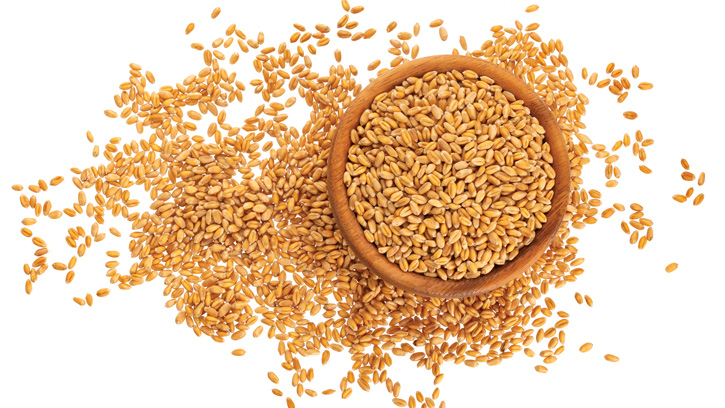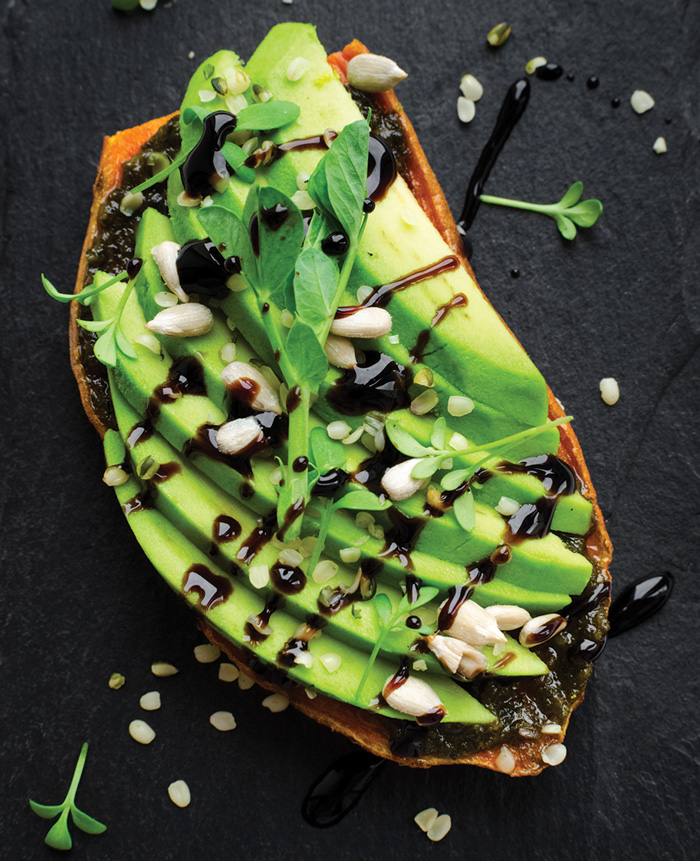Artificial nose detects meat freshness; Does pretty food equal healthy food?
NEWS
Modified wheat boosts grain production
Wheat is a vital food crop, providing about 20% of calories consumed by humans. To meet global demand, researchers have tried various methods to increase yield rates, which, until recently, have remained low. But a new modified wheat variety, created by researchers at the University of York, has been shown to boost grain production by up to 12%.
Simon McQueen-Mason, from the University of York’s Centre for Novel Agricultural Products at the Department of Biology, explained in a press release, “Attempts to increase the yield of wheat have been thwarted by the apparent trade-off between grain size and grain number. We decided to side-step this complex control system by giving a boost to the natural growth system that controls the size of plant tissues. We did this by increasing the levels of a protein called expansin, which is a major determinant of growth in plants. We targeted this modification so that it was confined to developing wheat grain, and are delighted by the results.”
Field experiments conducted by research partners at the Universidad Austral de Chile demonstrated the effectiveness of the plants under agricultural conditions. The team is now considering ways to make the research accessible to farmers and others in the industry, to help inform their decisions on crop production.
Artificial nose detects meat freshness
An artificial olfactory system that mimics the mammalian nose could be the key to assessing the freshness of meat in the future. Created by a team of scientists at Nanyang Technological University, Singapore, the e-nose device comprises a “barcode,” which changes color as it reacts to gases produced by decaying meat, and an AI-powered smartphone app that serves as a “reader.”
When tested on commercially packaged chicken, fish, and beef samples, the neural network AI algorithm that powers the e-nose predicted the freshness of the meats with 98.5% accuracy. The device, described in a paper published in Advanced Materials, could help to reduce food waste by providing more accurate assessments of meat freshness than a “Best Before” label could, according to the research team.
Co-lead author Chen Xiaodong explained in a press release, “Our proof-of-concept artificial olfactory system, which we tested in real-life scenarios, can be easily integrated into packaging materials and yields results in a short time without the bulky wiring used for electrical signal collection in some e-noses that were developed recently.
“These barcodes help consumers to save money by ensuring that they do not discard products that are still fit for consumption, which also helps the environment. The biodegradable and nontoxic nature of the barcodes also means they could be safely applied in all parts of the food supply chain to ensure food freshness.”
A patent has been filed for the device, and the researchers are working with a Singapore agribusiness company to extend the concept to other types of perishables.
Food system is key to climate change
Although the use of fossil fuels accounts for the majority of global greenhouse gas emissions, ecology professor David Tilman of the University of Santa Barbara believes that the food system could be the key to halting rising global temperatures.
In a paper published in Science, Tilman and colleagues predict that agricultural emissions alone could cause temperatures to rise more than the 1.5°C limit outlined in the Paris Climate Agreement by about 2050. Reducing the emissions from food production, “will likely be essential” to keeping the planet livable in its current state, according to the scientists.
Agriculture is necessary for food production, but global warming does not have to be an unavoidable impact of feeding the world. Through widespread adoption of several feasible food system strategies, it is possible to limit emissions from agriculture. The most effective, according to the paper, is a switch toward more plant-rich diets, which will reduce the pressure to clear land for grazing or production of grains and grasses to feed animals used for food.
Another strategy is to reduce the use of fertilizer by about 30%, which, according to Tilman, would save money and prevent the release of nitrous oxide that occurs when excess fertilizer goes unused. Other strategies include adjusting global per capita calorie consumption to healthy levels, improving yields to help meet demand where it may reduce the pressure to clear more land, and reducing food waste by half.
“The nice thing is that we can do each of these things sort of halfway and still solve the problem,” Tilman said in a press release. The sooner we employ these strategies, the closer we can get to keeping the Earth cool and avoiding the wholesale changes we would have to adopt if we wait too much longer, he added.
Cloud kitchen market to see CAGR of 12%
The global cloud kitchen market, valued at $43.1 billion in 2019, is estimated to reach $71.4 billion by 2027, with a compound annual growth rate (CAGR) of 12% from 2021 to 2027, according to research from Valuates Reports.
Cost-effectiveness is one of the key factors expected to drive growth, as cloud kitchens can operate from non-prime locations, thus saving on leasing costs. Additional factors are an increase in demand for online food delivery, an increase in demand for international cuisine, and the adoption of tech-savvy ordering systems.
By location, North America is expected to hold the largest market share during the forecast period, with dominance attributed to population growth, improved lifestyles, and growth in consumer buying power. The highest growth rate is expected in Asia-Pacific due to an increase in the number of young people in the area and rising demand for online food supplies.
Based on type, independent cloud kitchens, as opposed to commissary/shared kitchens and kitchen pods, contributed to the highest market share in 2019 and are expected to hold their position throughout the forecast period due to a rise in their use by grocery stores, restaurant brands, and multi-branded restaurants.
Does pretty equal healthy?
Food manufacturers strive to make their products look as attractive as possible, but do pretty aesthetics have other, potentially problematic, effects on consumers’ impressions of food? Researcher Linda Hagen from the University of Southern California decided to find out.
In a series of experiments, Hagen used classical aesthetics, which are characterized by the symmetry, order, and systematic patterns seen in nature, to evaluate consumer reactions to food. In one experiment, participants evaluated avocado toast, in either a pretty version or an ugly one. Although the study subjects were aware that ingredient and price information were identical, they rated the eye-appealing avocado toast as healthier, more nutritious, more natural, and containing fewer calories than the ugly version. Experiments with different foods and prettiness manipulations garnered similar results.
The effect of classical aesthetic principles has implications for both marketers and public health advocates, believes Hagen. In a press release, she explained, “Classical aesthetics may be a costless and subtle new way to convey naturalness and healthfulness—attributes that consumers increasingly demand in food products. At the same time, pretty food presentation may optimistically distort nutrition estimates and negatively impact dietary decisions. Given these findings, policy-makers may want to consider modification disclaimers as an intervention or strengthen regulations around providing objective nutrition information with food images.”






